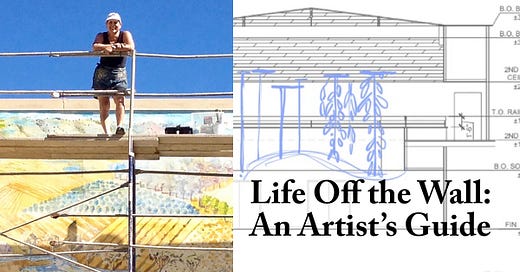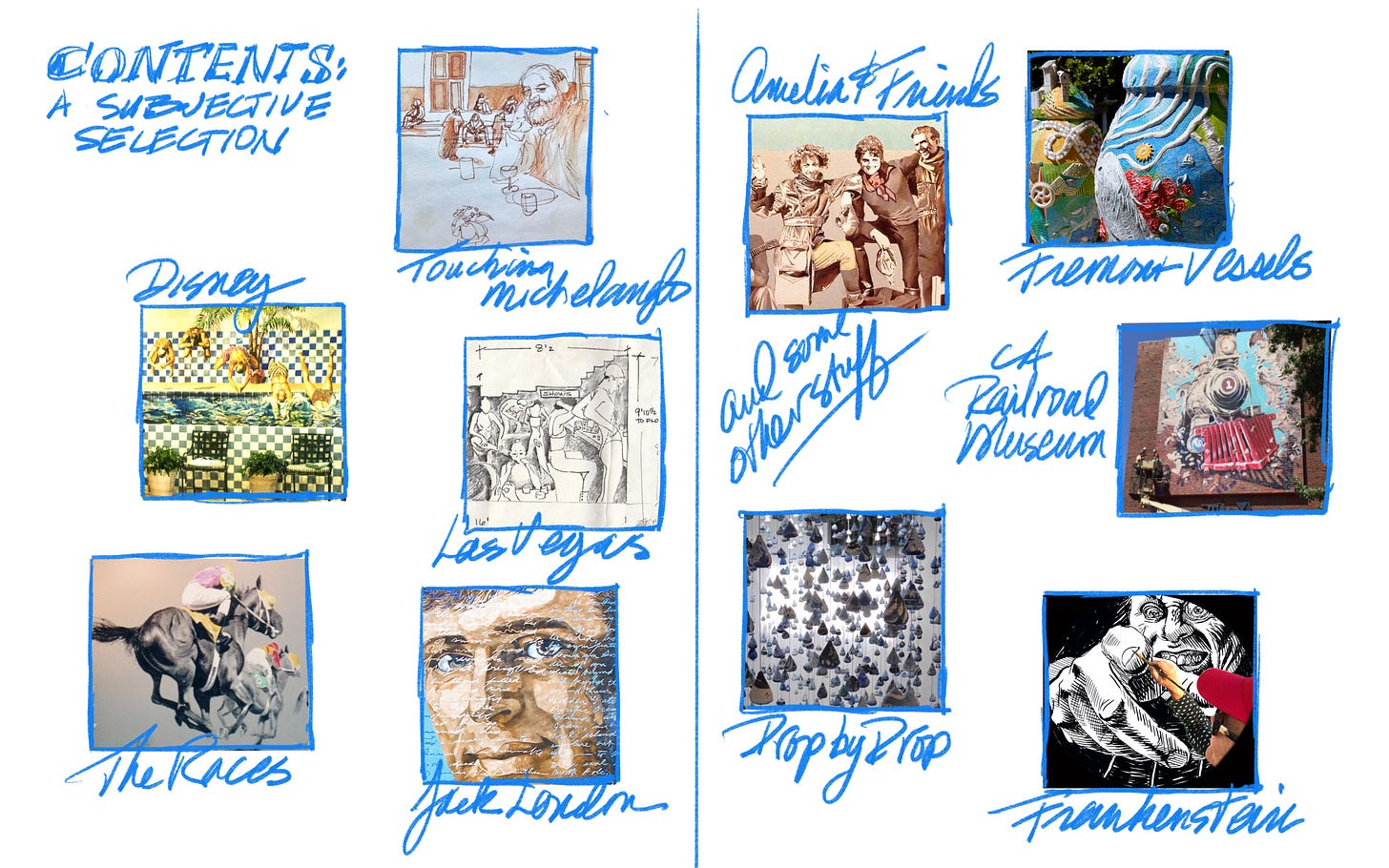Sure, I wanted a clean house, I just didn’t want to be the cleaner.
For a while, this was the working title of the book I was going to write.
The two questions that people most often ask me about my art are, ”How long did that take you?” and “When did you know you were an artist?” To the first, I’m always tempted to respond, “17 minutes,” and to the second, I sometimes tell the truth.
For a while, I thought the book would be more fun as a graphic narrative about what it’s like to live as an artist. Every day. More fun for me to create and more fun for a reader.
It was about process on various levels, a woven intersection of roles that I’ve negotiated, struggled with, endured, and survived. I’ve created thousands of paintings and sculptures for multinationals and for individuals for over fifty years. All that varied experience has given me insight into the factors and characteristics that most effectively maximize my creative efforts. But what were they?
Thus, when I started this, I was going to tell some war stories, some difficult, some funny, but I realized it’s not about some objective career that exists separate from what is me, as if I’m watching what happened to me in an out-of-body way. It’s about all the other stuff that challenges: being a wife, mother, daughter, and friend while aspiring to sanity and a career making art. Or making anything, because when I really think about it, I wasn’t making “art” at all: I was solving problems. I was making a living selling my only skill…which was selling myself.
We want purpose, we thrive on purpose, and I’m reminded of a time in my life, down on my hands and knees scrubbing the kitchen floor, pregnant. With an epiphany, I realized that there was no risk to this cleaning of the floor, no way to fail, and if I do fail, it won’t really matter. Sure, I wanted a clean house, I just didn’t want to be the cleaner.
Where am I to be found in the space between my work and my family? Am I to be found in the many journals, entered into on early mornings of motherhood, rants of displeasure, moments of joy, in the gap between hope and reality?
Some ramblings in no particular order
I can remember the exact moment that I became conscious that what I was doing was drawing. (See “What a Child Sees.) At five, I can distinctly remember contemplating my options as to how to solve a problem in a drawing. I’ve been seeking solutions to spatial problems ever since.
“Being gifted” has nothing to do with talent or intelligence. The gift is getting paid to do, what I’d do for free. Innate talent is only a seed. I’ve been earning my living solely as an artist (except for school) since 1966. I’ve created thousands of paintings and sculptures for multinationals, institutions, and individuals. All that varied experience has given me insight into the factors and characteristics that most effectively maximize my creative efforts. I have built a life that fits who I am and lets me do the work I love–with the condition that I adapt continuously, despite endless challenges.
Influences
No child’s room should ever be painted Pepto Bismo Pink. Mine was. Well, half of it was. The other two walls were grey. Grey did nothing to ameliorate the impact that shade of Pink had on sensitivity me. I was well into my thirties before I could purchase anything Pink. I was traumatized by Pink. And I was left with an acute awareness of my surroundings, especially architecture that included walls that attracted my attention.
What we, as girls, couldn’t do.
As an only child, I spent hours in my room either reading or drawing. I fantasized on paper, designing mid-century modern beach houses. I wanted to be an architect. There were lots of things girls couldn’t do. We couldn’t participate in competitive team sports in high school: no golf, tennis, basketball, soccer.
We couldn’t be architects, rarely lawyers, doctors, stock-exchange floor traders, construction workers, CPAs, CEOs and the list goes on. We could be painters and sculptors, but rarely with the big boys. We could teach and we could take care of people.
Since I couldn’t be an architect, I found another way to transform the built environment.
It’s not about talent; it’s about everything but talent.
This is How To Be An Artist , a newsletter about 22 essential rules for surviving as an artist, or any other kind of creative..




